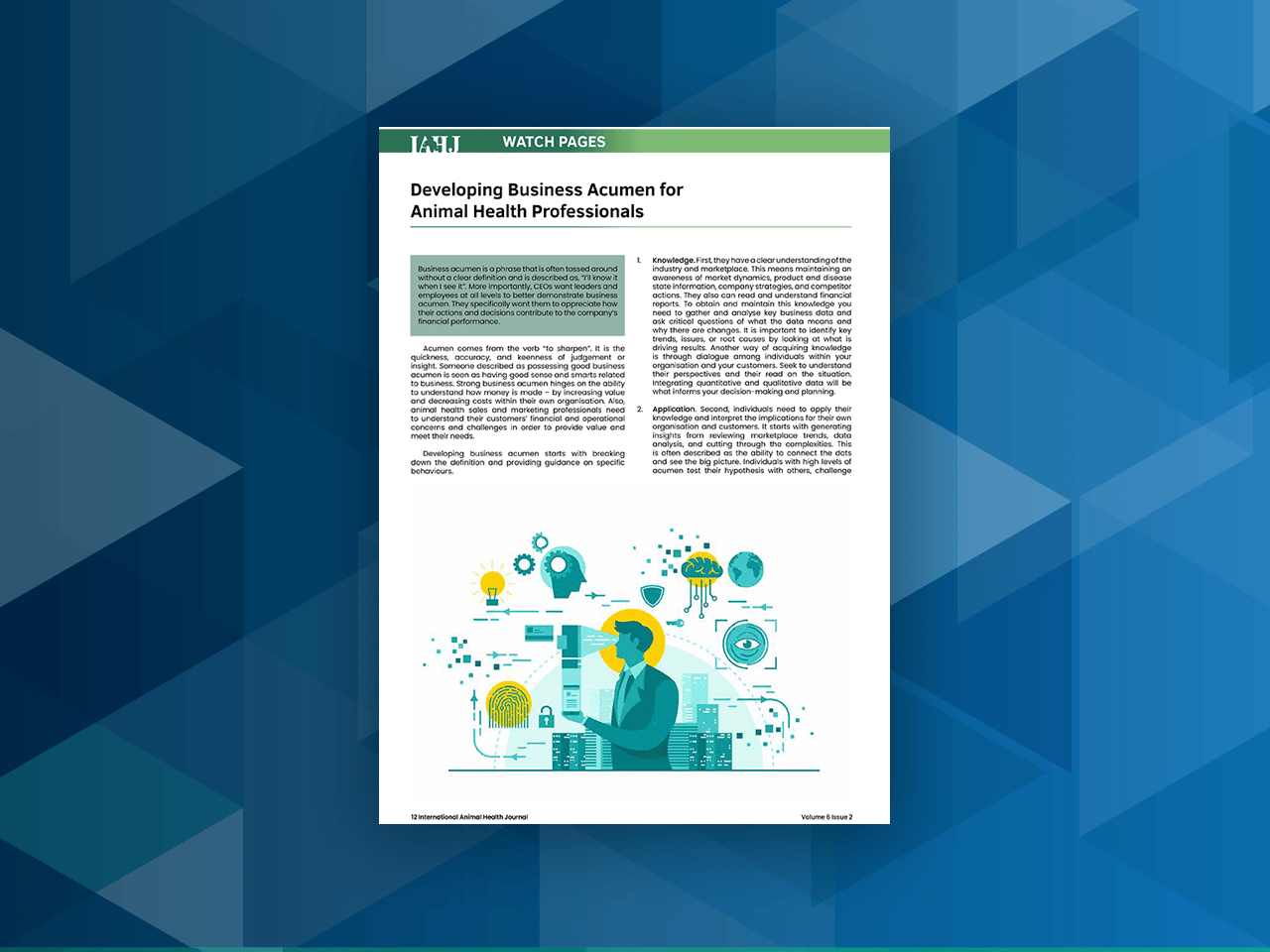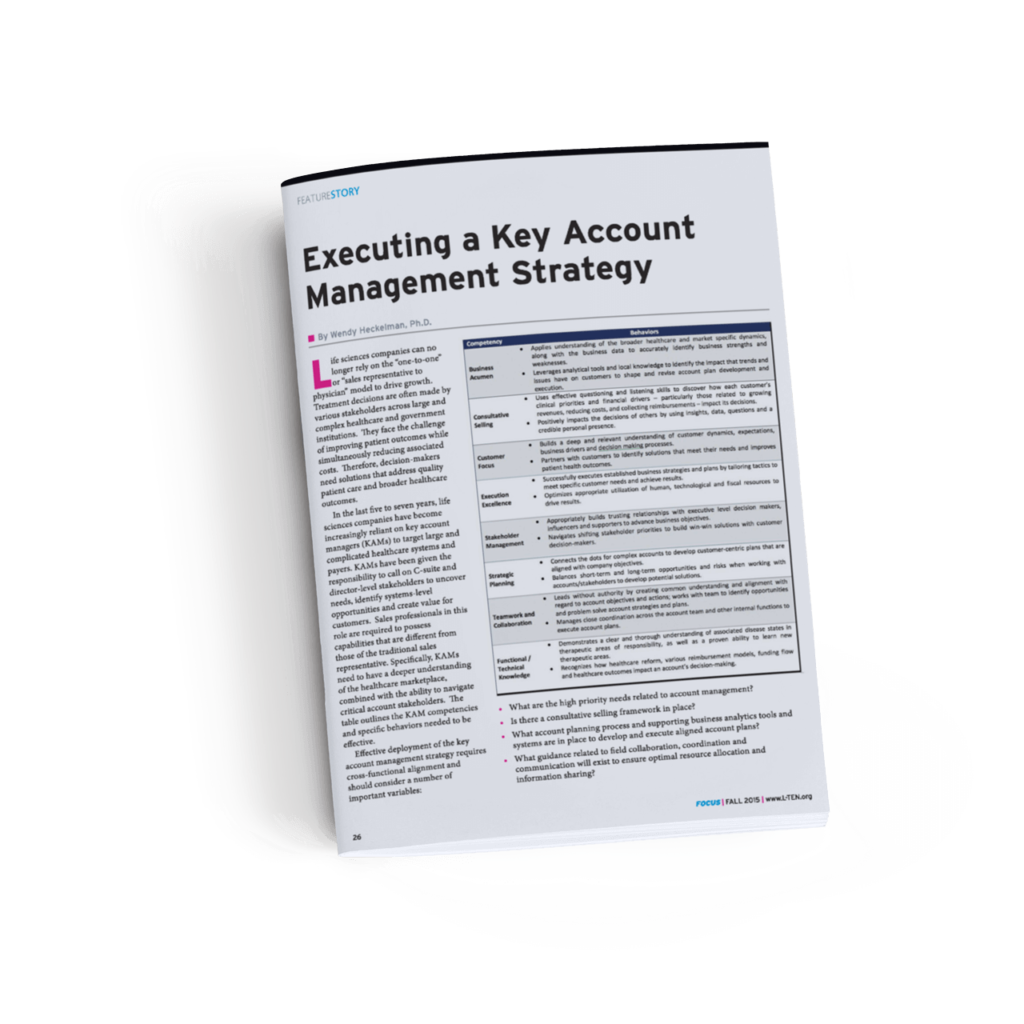Today’s animal health organizations need employees to contribute to organizational goals and objectives by making informed business decisions….

Pharmaceutical and life sciences’ customer-facing roles need sound business acumen to understand the evolving healthcare marketplace and the implications to customers and their own company(ies). Failure to strategically connect the dots leads to poor planning, missed opportunities, and less than optimal execution. We have extensive experience helping organizations like yours sharpen and evolve their commercial excellence to positively differentiate themselves from competitors.

With healthcare marketplace consolidation and larger organized customers exerting even greater influence on treatment decisions, there is a need for more effective planning. Unfortunately, many companies use inconsistent practices and do not bring rigor and strategic thinking to their geography and account planning. Failing to plan results in lost opportunities, inefficient resource deployment, and additional threats to obtaining or maximizing access.

Business acumen is having an appreciation for how your customers and your organization make money. For pharmaceutical professionals this means understanding their industry and connecting the dots in an increasingly complex healthcare delivery ecosystem. Failing to develop your customer-facing roles’ abilities to uncover and appreciate marketplace trends, challenges, and interconnections limits the customer engagement process and bringing value to your customers. Business Acumen can be developed.

Pharmaceutical sales professionals are among the most competitive. However, skills that lead to being top ranked are not the same as those needed where larger organized customers require the use of sophisticated account management strategies to obtain access and uncover needs. Most field organizations struggle with cultivating a results-driven account management mindset. Behavior change can be purposefully developed.

Talent that can create and execute a market access strategy is in high demand. With more reliance on Market Access roles to deliver value and demonstrate outcomes, purposeful talent development strategies are needed. Most HR consulting firms do not understand these roles and the business context. Access functions welcome a partner like WLH, who understands the functional complexity and has proven solutions for developing talent in Market Access roles.

Life sciences companies can no longer rely on the “one-to-one” or “sales representative to physician” model to drive growth. Treatment decisions are often made by various stakeholders across large and complex healthcare and government institutions. They face the challenge of improving patient outcomes while simultaneously reducing associated costs. Therefore, decision-makers need solutions that address quality patient care and broader healthcare outcomes.
